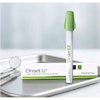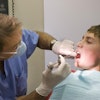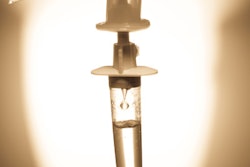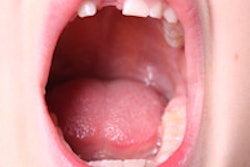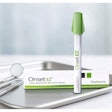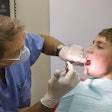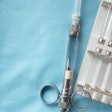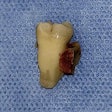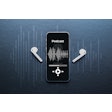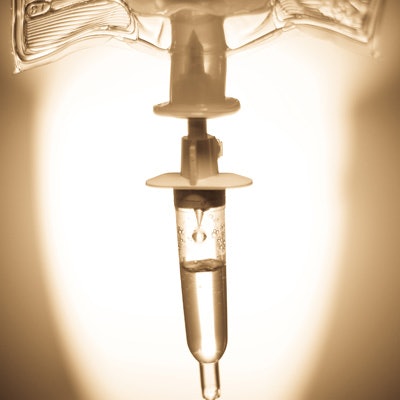
When treating preschool children for early childhood caries, is moderate sedation more effective than protective stabilization or general anesthesia in terms of improving the child's behavior at future dental visits? Researchers from Brazil focused on that question in a new study.
Balancing the need for patient safety, treating the immediate clinical issue, and laying the foundation for ongoing positive office visits is a difficult task when treating preschool-aged patients. To investigate if moderate sedation led to improved future dental visits by these patients, the researchers tested sedation and no-sedation methods in a study published in Brazilian Oral Research (October 24, 2016).
"Retrospective studies have shown conflicting results with regard to the long-term behavior of children during dental treatment, with some studies reporting better long-term acceptance of dental treatment by children with the tell-show-do method compared with moderate sedation or general anesthesia," wrote the study authors, led by Denise Espíndola Antunes, a doctoral student in the health sciences postgraduate program at the Federal University of Goiás.
Pharmacological approach
Three methods are generally used to aid in treating preschool-aged patients who need treatment: protective stabilization, moderate sedation, and general anesthesia. The researchers wanted to see if pharmacological approaches would facilitate the children's cooperation with the dentist in follow-up sessions by potentially decreasing their dental visit distress.
The study included 56 healthy children younger than 4 years old who showed negative behavior in previous dental appointments and were in need of extensive dental treatment. The children had a mean decayed, missing, and filled teeth index of 6.9. They were randomly assigned to one of four study groups:
- No sedation (control group) (n = 17)
- Moderate sedation with midazolam with a dosage of 1 mg/kg with a maximum of 20 mg administered orally (n = 16)
- Moderate sedation with the association of midazolam and ketamine: The midazolam dosage was 0.5 mg/kg with a maximum of 20 mg, and the ketamine dosage was 3 mg/kg dose with a maximum of 50 mg administered orally (n = 13).
- General anesthesia with sevoflurane, propofol, fentanyl, and premedication with midazolam (n = 4)
Importantly, the authors noted that all children in the first three groups were treated under protective stabilization in which the child was wrapped in a sheet fixed with tape. Those in the general anesthesia group were not.
For the study, the child's behavior at baseline (before dental treatment) and follow-up sessions was recorded by the same dentist (observer). This dentist was not the treating dentist at the appointment. Follow-up visits were conducted about four months after treatment completion and every four months afterward. The children completed a dental checkup with one of four certified pediatric dentists. Children were not protectively stabilized, but an accompanying adult was present.
For a quantitative scale of patient behavior, the researchers used the Ohio State University Behavior Rating Scale (OSUBRS). The scale ranks behavior from 1 to 4, with a lower score equaling less disruptive behavior.
| Ohio State University Behavior Rating Scale | |
| Score | Behavior |
| 1 | Quiet behavior, no movement |
| 2 | Crying, no struggling |
| 3 | Struggling movement without crying |
| 4 | Struggling movement with crying |
The researchers found that the children's behavior improved over time, with the sum of the scale scores decreasing on follow-up visits. At the beginning of treatment, the score for all children in all four groups combined was 12.4 on the scale. At the end of follow-up, the score had dropped to 6.8.
| Group scores using OSUBRS | |||
| Group (n) | Initial score (sum) | Final score (sum) | |
| No sedative (17) | 12.5 | 8.3 | |
| Midazolam (16) | 13.8 | 5.8 | |
| Midazolam/ketamine (13) | 11.3 | 5.0 | |
| General anesthesia (4) | 9.5 | 6.3 | |
Positive behavior
“Children who received moderate sedation during surgical-restorative dental treatment for early childhood caries behaved more positively during follow-up sessions.”
The study focused on the relatively narrow question of whether moderate clinical sedation improved behavior by children in the dental office, and the researchers did not address the risks of clinical sedation, including patient death.
While not mentioned in the study, the American Academy of Pediatrics and the American Academy of Pediatric Dentistry issued their updated guidelines for sedation of pediatric patients in June 2016. Children younger than 6 years, particularly those younger than 6 months, may be at greatest risk of an adverse event during sedative procedures and are "particularly vulnerable to the sedating medication's effects on respiratory drive, airway patency, and protective airway reflexes," the academies noted. The children treated in this study were all younger than 6 years old at the study onset.
The academies also stated that a number of other modalities (careful preparation, parental presence, hypnosis, distraction, topical local anesthetics, electronic devices with age-appropriate games or videos, and more) "may reduce the need for or the needed depth of pharmacologic sedation."
For the new study, the small size of the general anesthesia group means the results should be viewed with caution, according to the authors. Previous studies have had mixed results when it comes to subsequent behavior among children in follow-up visits, they noted.
"Our results demonstrate that children who received moderate sedation during surgical-restorative dental treatment for early childhood caries behaved more positively during follow-up sessions than those patients who did not receive sedation," the authors concluded, but they recommended that more studies are needed to evaluate children who receive general anesthesia compared with those who receive midazolam.


